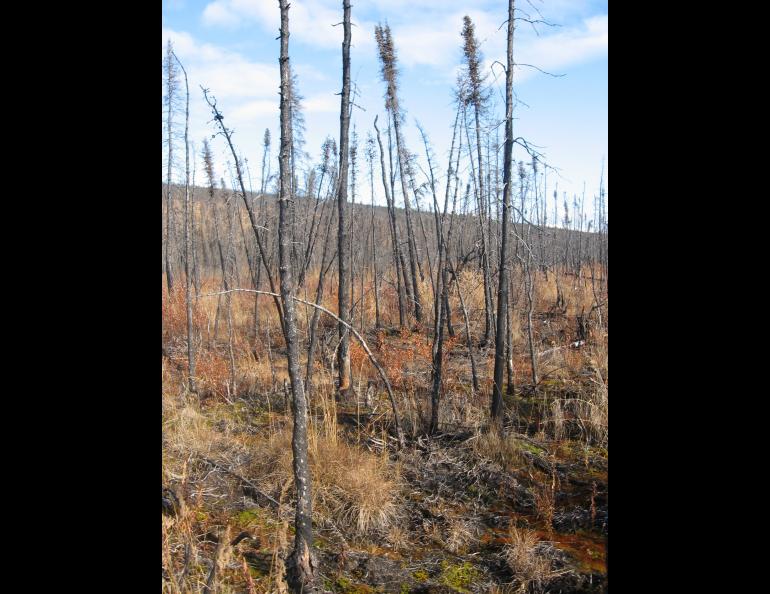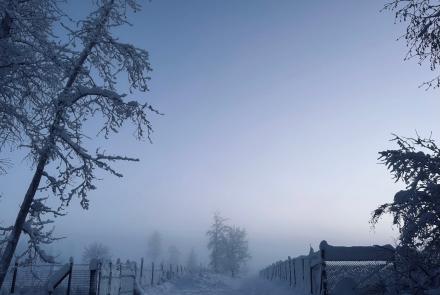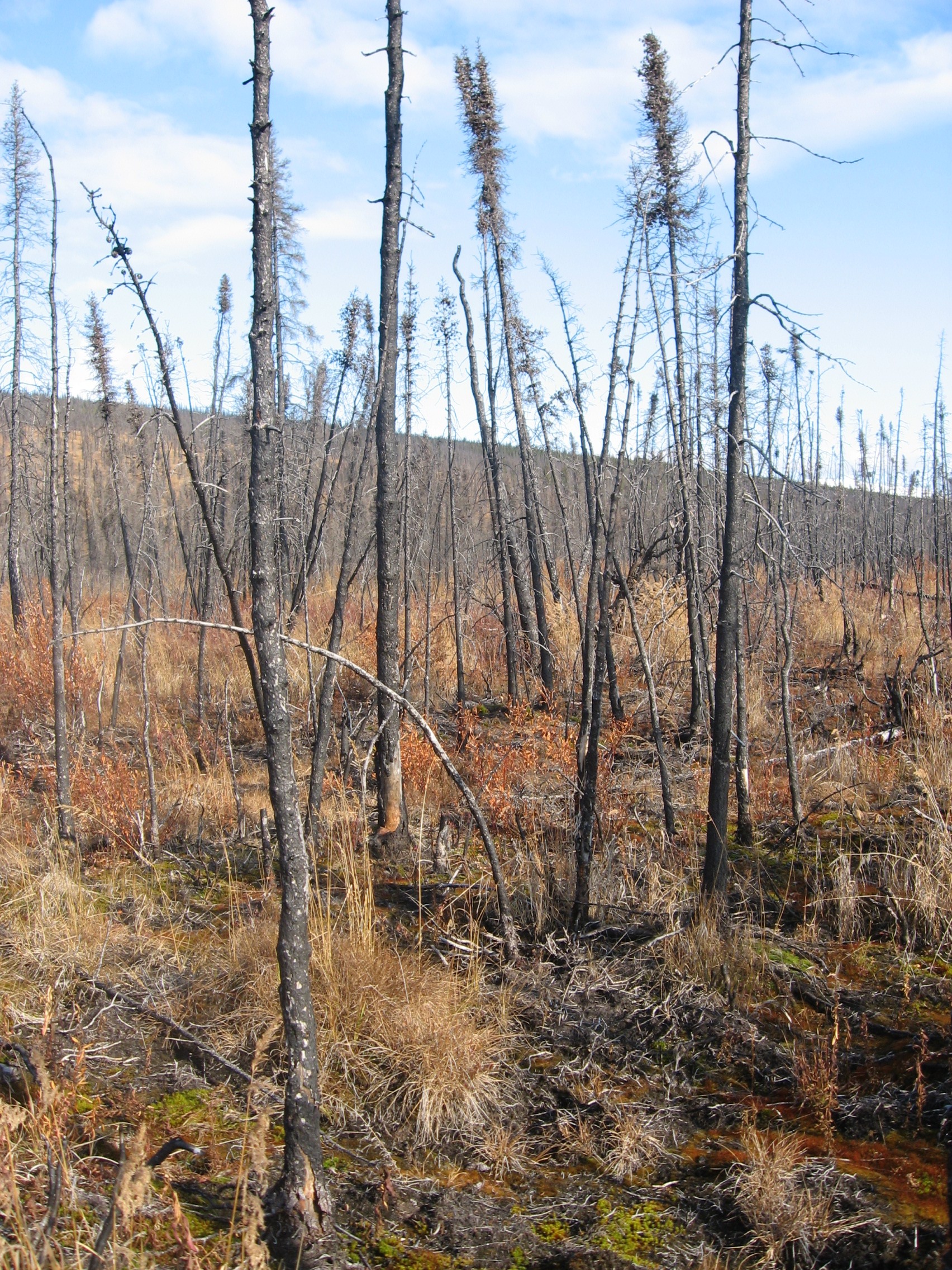
Wildfires may send permafrost protections up in smoke
Across much of Alaska, permafrost is thawing. In most locations of interior and south Alaska, what permafrost exists is protected by the ecosystems around it. Trees, moss and peat shade the ground from summer heat and help slow thaw.
At the same time, scientists predict that wildfire seasons in Alaska will increase in duration and severity. The protection that these flammable organic materials provide to critical landscapes may go up in smoke.
New research from Sergey Marchenko at the University of Alaska Fairbanks Geophysical Institute shows wildfires, which affect terrestrial carbon storage, result in significant changes in permafrost zones. If carbon storage from boreal forests and peatlands is lost, substantial and sharp increases in atmospheric CO2 concentration are likely.
Marchenko presented his findings at the American Geophysical Union annual fall meeting in San Francisco in December.
“Permafrost is one of the key components of the Arctic system” in regions where it is present, Marchenko said. “Changes in permafrost lead to changes in everything — hydrogeology, topography, ecosystem, vegetation. Everything!”
The organic layer above permafrost shields the ice from summer’s higher temperatures. Moss and peat are some of the best guardians of permafrost. In the summer they insulate the ground and prevent warm air and solar energy from penetrating. They also trap cold below the surface. Right before winter, during the wet months, water makes its way into the organic materials and then freezes when the season changes. When frozen, moss and peat are poor insulators, allowing frost to penetrate the soil, which helps stabilize permafrost.
Wildfires strips off this insulating blanket, accelerating thaw of the permafrost below.
Although permafrost can extend hundreds of feet deep, there is a large concentration of ice-rich permafrost in the upper 10-16 feet of soil in places like Alaska, Siberia and northeastern China. At these shallow depths, what happens on the surface is more likely to have effects on the underlying ice.
By 2100 permafrost in the upper 10 feet of Alaska’s landscape is expected to thaw by 60 percent. This means an additional 80 cubic miles (300 cubic kilometers) of soil in that zone alone could thaw across the state, emitting additional methane and CO2 could into the greenhouse gas cycle. If these projections include forecasted wildfires, that volume doubles.
At Nome Creek, 47 miles northeast of Fairbanks, Alaska, at about 1.5 feet down, ground temperatures went from 28 degrees Fahrenheit to more than 35 F immediately after a 2003 wildfire. Temperatures have since not fallen to pre-fire levels, but have stayed high, mostly ranging from 41 F – 48 F. At deeper depths, changes are less dramatic, but the pattern is the same, said Marchenko.
This may seem like insignificant temperature changes for humans, but just one degree can mean the difference between freeze and thaw.
Marchenko integrated data from three complex computer simulations to model permafrost, climate change, wildfires and other environmental factors. He used them to simulate how permafrost responds to wildfire-induced surface disturbances.
The resulting model was validated using over 16 long-term permafrost research sites, like the one at Nome Creek, located in different landscapes. The sites, in locations across Alaska and monitored by the GI Permafrost Laboratory, observe permafrost and ground temperatures as well as moisture levels. Some of the sites have been burned by fire, others have not.
The model simulated conditions after a fire in the area and compared the results to data from the field sites. The results were almost identical, providing a proof of concept for the project and illustrating the complex environmental relationships.
Results from this study will be used to further improve models of permafrost thaw or expansion, helping to improve predictions. Marchenko hopes to continue the work by further integrating information from remote sensing data about more diverse vegetation. He plans to look at the type and distribution of plants as a result of climate change and how the plants interact with fire systems, which could substantially affect land management policies.
Fritz Freudenberger, University of Alaska Fairbanks Geophysical Institute, 907-474-7185, ffreudenberger@alaska.edu





